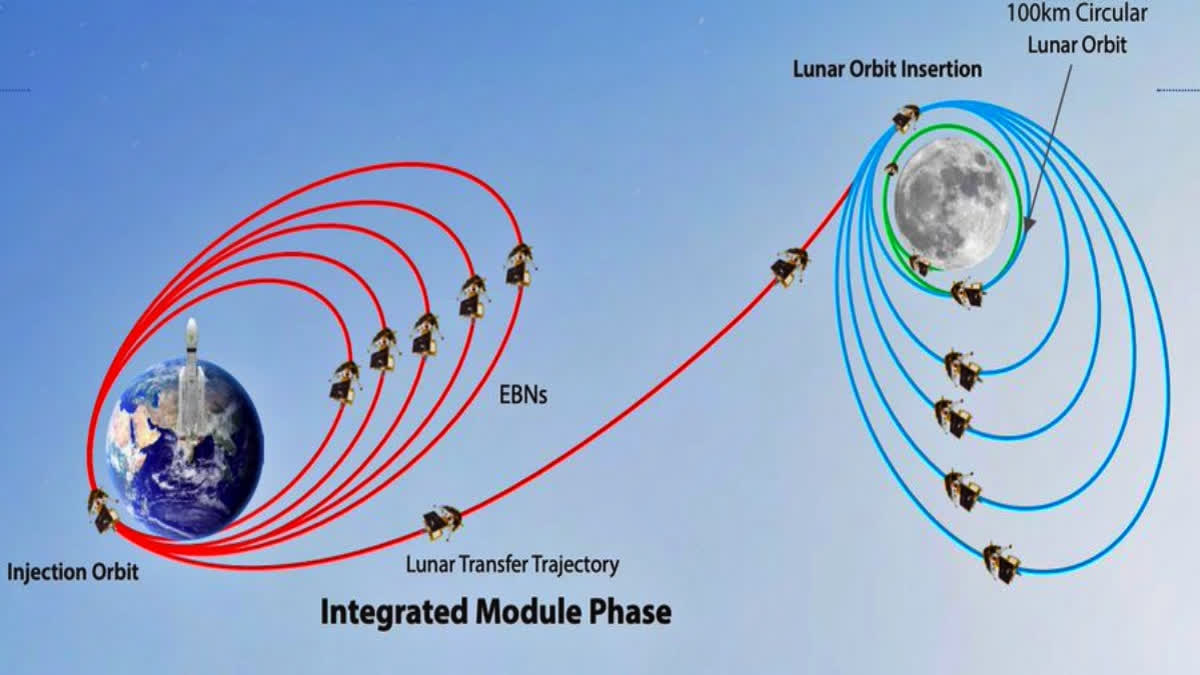New Delhi: The Indian Space Research Organisation (ISRO) Saturday said that the first orbit-raising manoeuvre in Chandrayaan-3 Mission was successfully performed at ISRO's Telemetry, Tracking and Command Network (ISTRAC) in Bengaluru and the spacecraft's health was normal.
"Chandrayaan-3 Mission update | "The spacecraft's health is normal. The first orbit-raising manoeuvre (Earthbound firing-1) is successfully performed at ISTRAC/ISRO, Bengaluru. Spacecraft is now in 41762 km x 173 km orbit," ISRO tweeted.
-
Chandrayaan-3 Mission update:
— ISRO (@isro) July 15, 2023 " class="align-text-top noRightClick twitterSection" data="
The spacecraft's health is normal.
The first orbit-raising maneuver (Earthbound firing-1) is successfully performed at ISTRAC/ISRO, Bengaluru.
Spacecraft is now in 41762 km x 173 km orbit. pic.twitter.com/4gCcRfmYb4
">Chandrayaan-3 Mission update:
— ISRO (@isro) July 15, 2023
The spacecraft's health is normal.
The first orbit-raising maneuver (Earthbound firing-1) is successfully performed at ISTRAC/ISRO, Bengaluru.
Spacecraft is now in 41762 km x 173 km orbit. pic.twitter.com/4gCcRfmYb4Chandrayaan-3 Mission update:
— ISRO (@isro) July 15, 2023
The spacecraft's health is normal.
The first orbit-raising maneuver (Earthbound firing-1) is successfully performed at ISTRAC/ISRO, Bengaluru.
Spacecraft is now in 41762 km x 173 km orbit. pic.twitter.com/4gCcRfmYb4
Earlier in the day, Director of Vikram Sarabhai Space Centre S Unnikrishnan Nair said the ISRO scientists will fire the onboard thrusters attached to Chandrayaan-3 from Saturday onwards, taking the spacecraft further away from Earth on a crucial 41-day phase to make a soft-landing at the south pole of the Moon on August 23.
Speaking to reporters in Thiruvananthapuram on Saturday, Nair said the launch vehicle has performed "extremely well" and initial conditions required for Chandrayaan-3 have been provided "very precisely". On July 14, the Indian Space Research Organisation successfully launched Chandrayaan-3 on board an LVM3-M4 rocket from Satish Dhawan Space Centre. And 17 minutes after lift-off at 2.35 pm, the satellite was precisely injected into the intended orbit.
"Today onwards, the onboard thrusters will be fired and Chandrayaan-3 will be taken away from Earth for an eventful landing on Moon's surface on August 23," Nair said. "The vehicle system has performed extremely well. And because of that, whatever the initial conditions the spacecraft needed, we have provided very precisely," he added.
Since the first leg of the experiment is one hundred percent successful, the spacecraft also is in very good health and would be able to go to the Moon on its own using its propulsion and its onboard logic, he explained. An official of Satish Dhawan Space Centre in Sriharikota who did not want to be named said, "Scientists would be engaged in several orbit raising manoeuvres during this phase."
The first set of manoeuvres are expected to take place on Saturday, the official said. Chandrayaan-3 Project Director P Veeramuthuvel said on Friday after the launch that ISRO would be closely monitoring and controlling the spacecraft from ISRO Telemetry, Tracking and Command Network (ISTRAC), Bengaluru.
"Many critical events are lined up, starting from Earth-bound manoeuvres, insertion into lunar orbit and separation of lander, a set of deboost manoeuvres, and finally the power descent phase for a soft landing (on the lunar surface)," Veeramuthuvel said.



